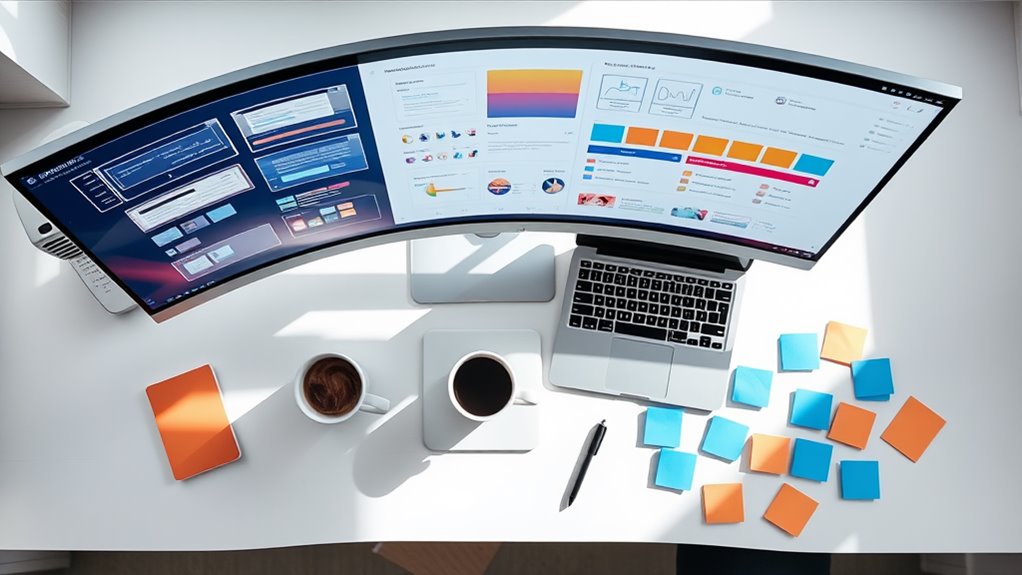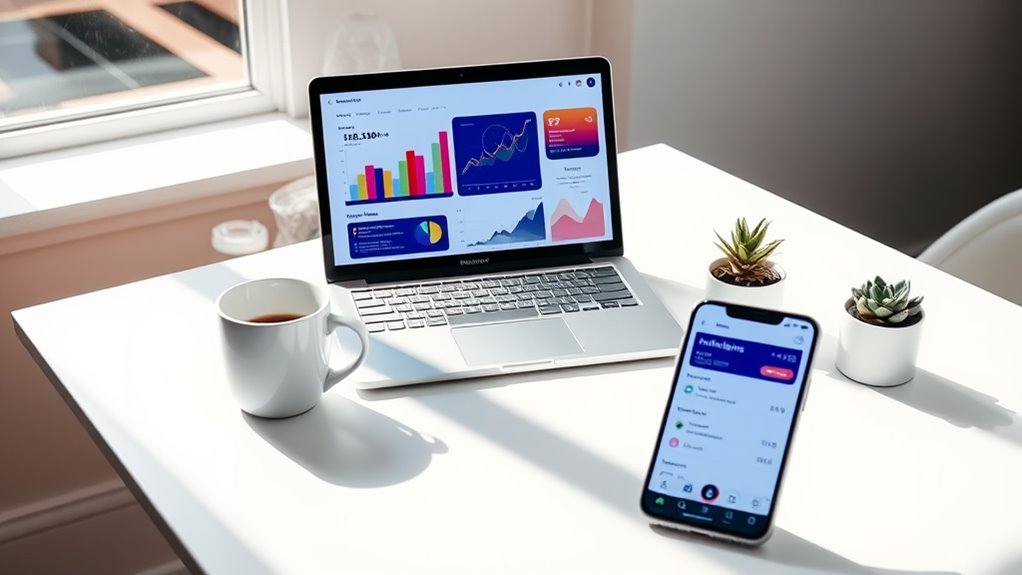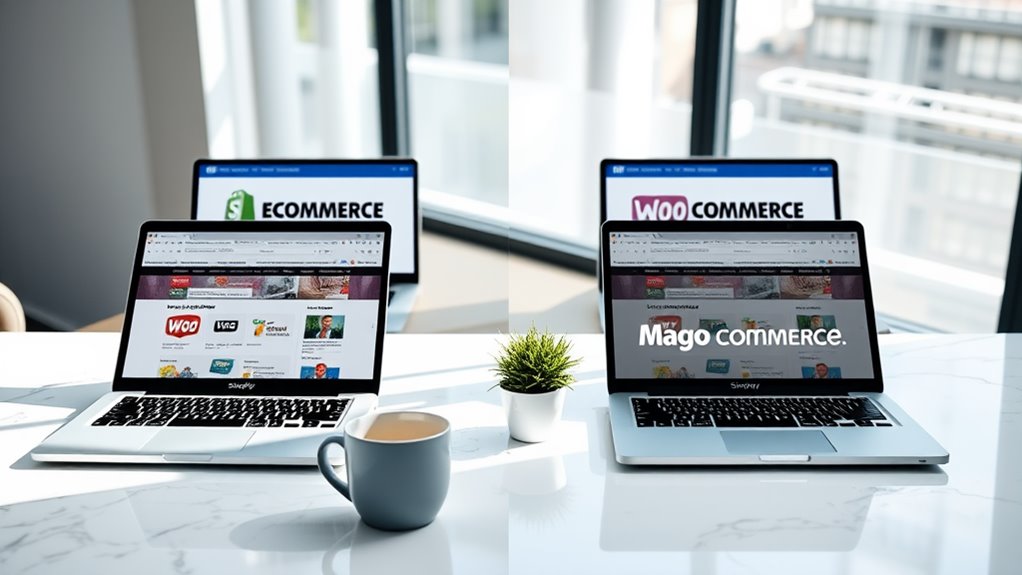Custom web design is a professional service where you'll get a unique website built specifically for your business needs, rather than using pre-made templates. You'll work with designers who create original layouts, graphics, and functionality that align with your brand identity and business goals. Unlike template-based designs, custom websites offer complete control over every element, from navigation to user experience, potentially reducing bounce rates by up to 40% and increasing visitor engagement by 38%. While custom design requires a higher initial investment ($5,000-$50,000+), it provides superior scalability, performance, and long-term value. Understanding the full scope of custom design will help you make an informed choice for your business's digital presence.
Key Takeaway
- Custom web design is a tailored approach to creating unique websites built specifically for a brand's individual needs and goals.
- Unlike templates, custom designs provide complete control over visual elements, functionality, and user experience with unique branding.
- Custom websites are built from scratch by professional designers, typically costing between $5,000-$50,000+ with 8-12 weeks development time.
- It offers enhanced performance through optimized code, resulting in faster load times and better search engine rankings.
- Custom designs provide scalable solutions that can grow with businesses while maintaining brand consistency and unique visual identity.
Benefits of Custom Web Design
• Brand Differentiation
You'll establish a unique visual identity that sets you apart from competitors using cookie-cutter templates, helping you capture 38% more visitor attention in the first 2.6 seconds.
– Optimized User Experience
Your site will feature intuitive navigation and functionality specifically tailored to your audience's needs, potentially reducing bounce rates by up to 40%.
– Scalability
You'll get a website that grows with your business, eliminating the need for complete overhauls as your organization expands.
– Enhanced Performance
Custom coding guarantees faster load times and better mobile responsiveness, which can improve your search rankings by up to 32%.
– Strategic Functionality
You'll integrate exactly the features you need, from custom payment systems to specialized booking tools, without unnecessary bloat that slows down your site.
– Complete Control
You'll have full ownership of your design and can make updates or modifications whenever needed, without template limitations.
Custom vs. Template Web Design
When choosing between custom and template web design, businesses face a pivotal decision that impacts their online presence. You'll need to weigh several key factors to determine which approach best serves your goals and budget.
Custom Web Design:
- Complete control over functionality, layout, and user experience
- Unique branding that sets you apart from competitors
- Scalable solutions that grow with your business
- Superior SEO optimization potential
- Higher initial investment ($5,000-$50,000+)
- Longer development time (2-4 months average)
Template Web Design:
- Quick implementation (often within days)
- Lower upfront costs ($500-$5,000)
- Pre-tested functionality
- Limited customization options
- Shared design elements with other websites
- Potential performance limitations
You'll find that custom design offers unmatched flexibility and originality, while templates provide cost-effective, rapid deployment. If you're targeting a specific market niche or require unique features, custom design typically delivers better long-term value. However, if you're launching a startup or need a basic online presence quickly, template solutions can effectively meet your immediate needs while keeping costs manageable.
The Custom Design Process
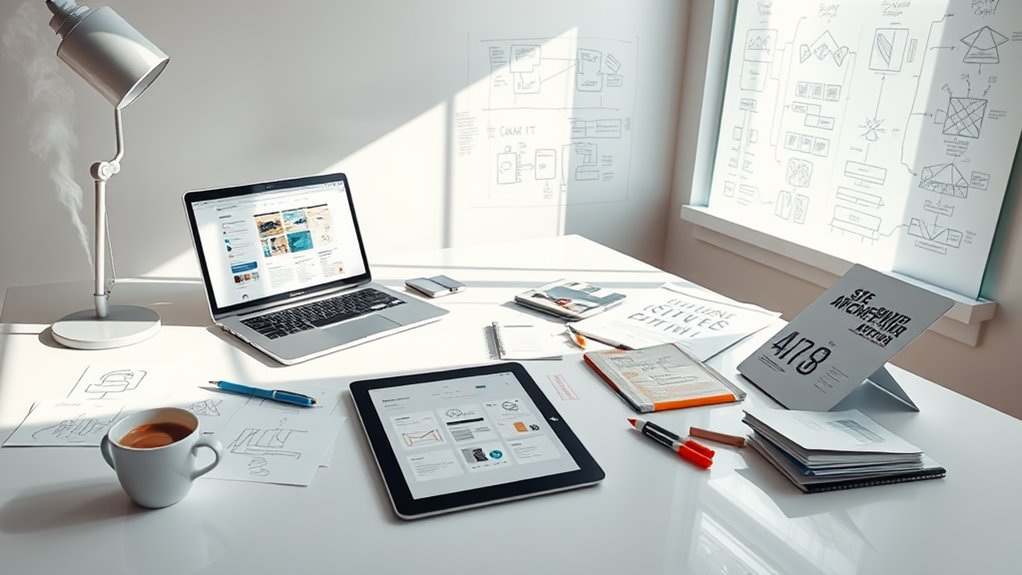
Understanding the custom web design process helps you navigate the journey from concept to launch with confidence. The process typically follows a structured path that guarantees your vision transforms into a fully functional website.
Key Phases of Custom Web Design:
- Discovery & Planning
- You'll collaborate with designers to define goals, target audience, and functionality
- Creation of project timeline, budget parameters, and technical requirements
- Development of initial wireframes and site architecture
- Design & Development
- Your designers create mockups for key pages and brand elements
- You'll review and approve design concepts through multiple iterations
- Development team builds the site's functional components and features
- Testing & Launch
- Quality assurance testing across devices and browsers
- Content population and final design refinements
- Site optimization for performance and SEO
- Launch preparation and deployment
Throughout each phase, you'll have opportunities for feedback and revisions. The process typically takes 8-12 weeks for a standard business website, though complex projects may require additional time. Your involvement in regular check-ins guarantees the final product aligns with your vision and business objectives.
Key Design Elements
A successful custom web design relies on mastering specific design elements that work together to create an impactful user experience. You'll need to focus on these essential components to guarantee your website stands out and performs effectively.
Key Visual Elements:
- Color scheme: Select 2-3 primary colors that align with your brand identity
- Typography: Choose up to 2 complementary fonts that enhance readability
- White space: Maintain 30-40% negative space for better visual balance
- Image quality: Use high-resolution visuals (minimum 72 DPI for web)
Structural Components:
- Navigation: Keep menu items between 5-7 for ideal user experience
- Grid system: Implement a 12-column layout for responsive design
- Call-to-action placement: Position CTAs above the fold for 25% higher engagement
- Content hierarchy: Structure information using H1-H6 tags appropriately
Technical Considerations:
- Loading speed: Aim for under 3 seconds page load time
- Mobile responsiveness: Design for the 63% of users who browse on mobile devices
- Interactive elements: Include hover states and micro-animations for engagement
- Accessibility: Follow WCAG 2.1 guidelines for inclusive design
You'll want to integrate these elements systematically while maintaining consistency throughout your website's design.
Building for Your Target Audience
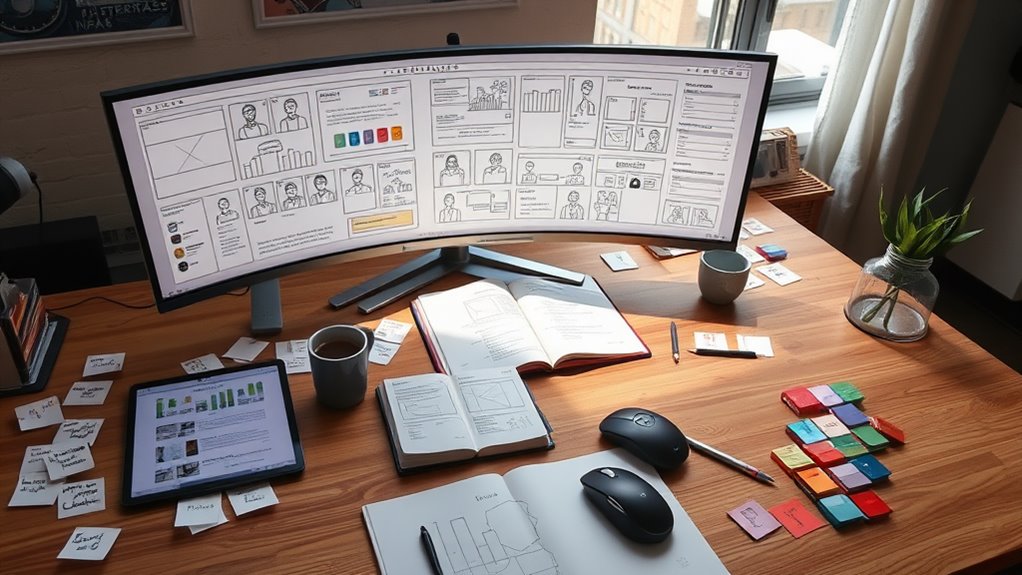
- Device Usage: If 70% of your audience uses mobile devices, you'll need to prioritize mobile-first design principles
- Navigation Patterns: Structure your site's flow based on how your target users typically search for information
- Content Accessibility: Adapt typography, contrast, and layout to match your audience's visual preferences and needs
- Cultural Considerations: Incorporate design elements that resonate with your audience's cultural background
You'll want to leverage data analytics and user research to make informed decisions about:
- Color schemes that align with your audience's psychological triggers
- Content placement that matches their scanning patterns
- Call-to-action buttons positioned where they're most likely to engage
- Loading speeds optimized for their typical internet connections
Cost and ROI Considerations
When you invest in custom web design, evaluating both initial costs and potential returns becomes essential for project success. A professionally designed website typically costs between $5,000 and $30,000, depending on your specific requirements and project scope. You'll need to take into account not just the upfront development costs, but also ongoing maintenance and updates.
To maximize your return on investment, you'll want to track these key performance indicators:
- Conversion rates, which often increase by 200-400% with custom designs compared to template solutions
- User engagement metrics, including time spent on site and pages per session
- Mobile responsiveness scores, as 60% of web traffic now comes from mobile devices
- Search engine rankings and organic traffic growth
Your custom website's ROI will depend heavily on how well it aligns with your business objectives. You'll typically see returns within 6-12 months through increased leads, sales, or brand awareness. Think about implementing analytics tools from day one to track performance metrics accurately. Remember that while custom web design requires a larger initial investment than template solutions, it offers greater flexibility, scalability, and potential for long-term business growth.
Choosing the Right Design Partner
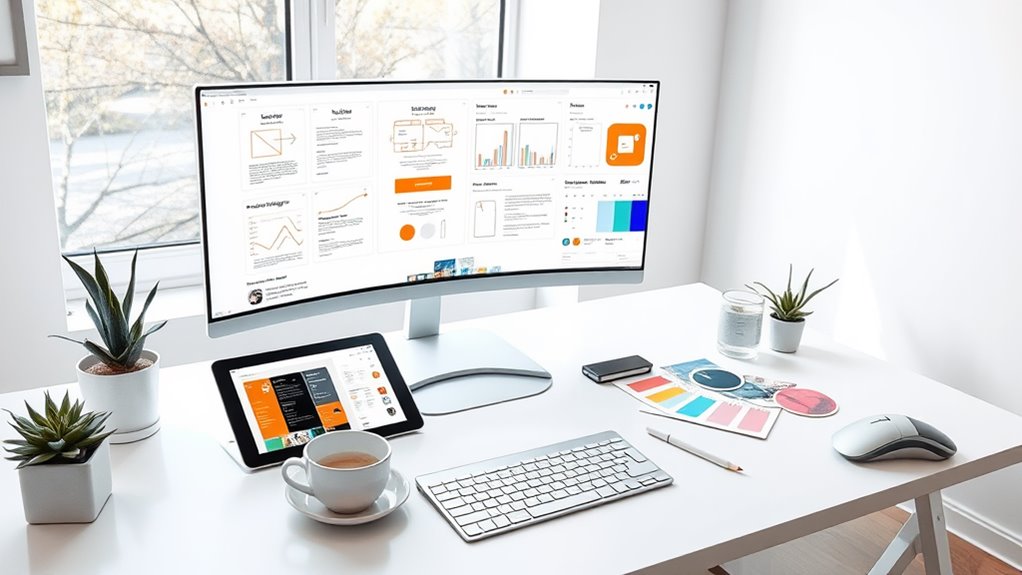
Success in custom web design largely depends on selecting the right design partner for your project. When evaluating potential partners, you'll need to assess their expertise, track record, and alignment with your business goals.
Key Factors to Reflect On:
- Portfolio Depth: Review their previous work to guarantee they've handled projects similar to yours, checking for versatility and innovation across different industries.
- Technical Expertise: Verify their proficiency in current design technologies, frameworks, and responsive development methods.
- Communication Style: You'll want a partner who provides regular updates, maintains clear channels of dialogue, and responds promptly to your inquiries.
- Project Management: Look for structured processes, detailed timelines, and transparent milestone tracking.
- Client References: Don't hesitate to request references from past clients, particularly those with projects comparable to yours.
Your design partner should demonstrate:
- A proven discovery and planning process
- Clear pricing structures without hidden fees
- Extensive post-launch support options
- Experience with your industry's compliance requirements
- Ability to scale solutions as your business grows
Remember to schedule consultation calls with multiple candidates before making your final decision, as chemistry and communication styles play vital roles in project success.
Conclusion
Carefully crafting your custom website delivers distinctive digital dividends that you'll appreciate for years to come. While you'll spend more initially compared to template solutions, you're investing in a powerful, personalized platform that perfectly positions your brand. Whether you're seeking superior functionality, seamless user experiences, or standout aesthetics, custom web design provides the professional presence you need to prosper in today's competitive online marketplace.

